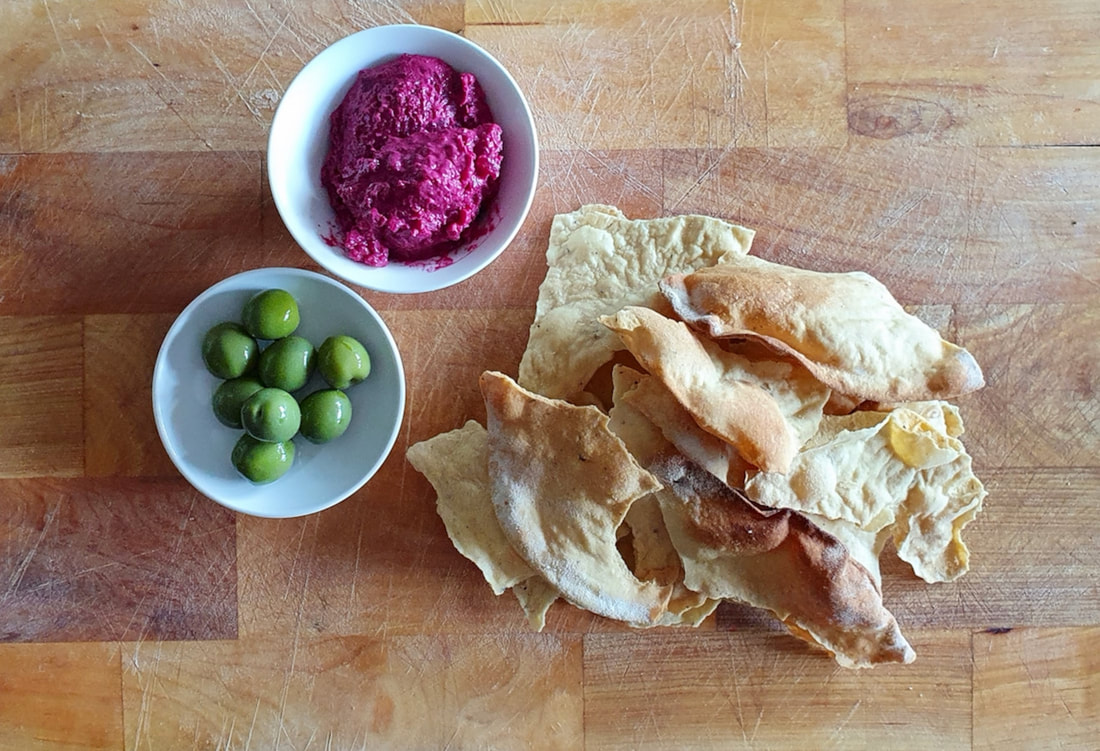|
A customer recently popped in to get ingredients for making English muffins, and asked what they were traditionally dusted with. I admitted that I hadn't a clue, and advised, with not much conviction, to try semolina.
I realised that not only had I never made English muffins from scratch, I'd never even thought of doing so. Yet suddenly it was at the top of my to-do list. That evening I consulted the great Google and learnt that yes, English muffins are dusted with semolina. However, many recipes called for polenta, regular flour, corn meal or farina cereal. Just to confuse things further, all of these online sources were adamant that theirs was the only proper English way. As it so happened, I had both semolina and cornmeal in my pantry, so I decided to make a batch right away, dusting half with semolina and half with corn meal. The results were basically identical, although I do like the speckled golden edge of the corn meal ones best. Flavour-wise, there was nothing in it. So here it is, our English muffin recipe, cobbled together from the knowledge I gleaned online from two British bakers plus the results of my own tinkering about. I was delighted by both how easy they were to make, and how deliciously authentic they tasted. They're truly delicious with both savoury and sweet toppings. We enjoyed a freshly made one with jam, then froze the rest before toasting them two days later as the base for a delicious Eggs Benedict.
0 Comments
When is bread not bread? When it's banana bread! Yep, we all know banana bread is cake, and that just the act of baking it in a loaf shape does not in fact make it bread, but we've all been calling it bread for too long to change now. And isn't it nice to justify cake for breakfast? I mean, we don't generally eat French fries for breakfast but we're always down for a hash brown. It's all about how you market it. Fried po-tay-to, fried po-tah-to. Same rules apply for banana bread.
This oh-so-simple mix and bake recipe is very handy. Feel free to make it your own by adding in different things. Sometimes I add blueberries, or a shot of cooled espresso, and on one decadent occasion, I stirred a giant spoonful of milo through the batter. Delicious! Have fun experimenting and making it your own. Isn't winter in Sydney glorious? Recent rain aside, there's something lovely about this time of year's crisp, sunny days and chilly evenings.
We Sydneysiders, who live in a warm climate for a solid 7 months of the year, don't take this frosty, snuggle-up weather for granted. This really shows itself in the food we enjoy over the winter period. Soups and stews, fragrant curries, shepherds pie…rich, hearty fare that we largely do away with in the stifling summer. Baked treats all but disappear from my repertoire in summer. But June through August my oven gets a regular workout. Mostly sweet things like muffins and biscuits. The occasional cake if my children are nice to me. But what about savoury baking? It often gets forgotten for the showier, sugary treats. But not today. If you're looking for something you can make in a flash, with ingredients we tend to always have on hand, will please everyone in your life whether they're sweet tooths or savoury lovers, look no further than cheese scones. They're a cinch to make, I promise and guaranteed to secure you invites to every picnic! The silly season is almost upon us - how did that happen?! With that in mind, we wanted to give you a recipe that will help grease the post-lockdown rusty wheels of socialising and hospitality.
Homemade Lavash - or flatbread crackers are a quietly genius way to spruce up your cheese platter. They also make the perfect offering to take to holiday get-togethers, and they're a lovely gift for friends, colleagues and school teachers. To the receiver they have the sparkly allure of being an impressively complicated thing to make, but they're really not! Whether you're a novice in the kitchen or an old-hand, Lavash crackers require a very small set of both skills and ingredients. Let's do this. MIX, WAIT, SHAPE & BAKE. That's all that's required for the most beautiful, golden crusty homemade loaf. Your nearest and dearest will think you've spent weeks nurturing a starter then half a day kneading and resting the dough. There is no need to tell them that you produced this wondrous bread on a spur of the moment whim, or that it took a mere 10-15 mins of your time to put together.
Your secret is safe with us. |
Categories
All
Archives
January 2024
|






 RSS Feed
RSS Feed